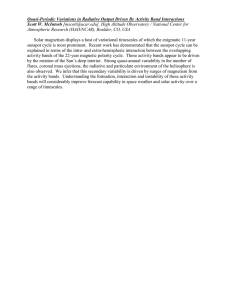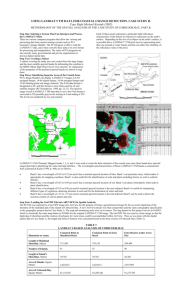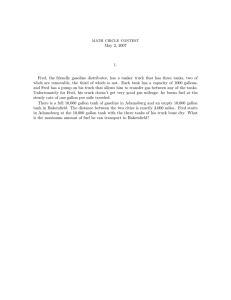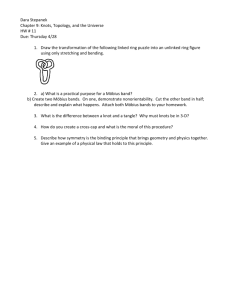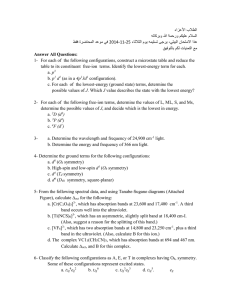Stephen Teet
advertisement
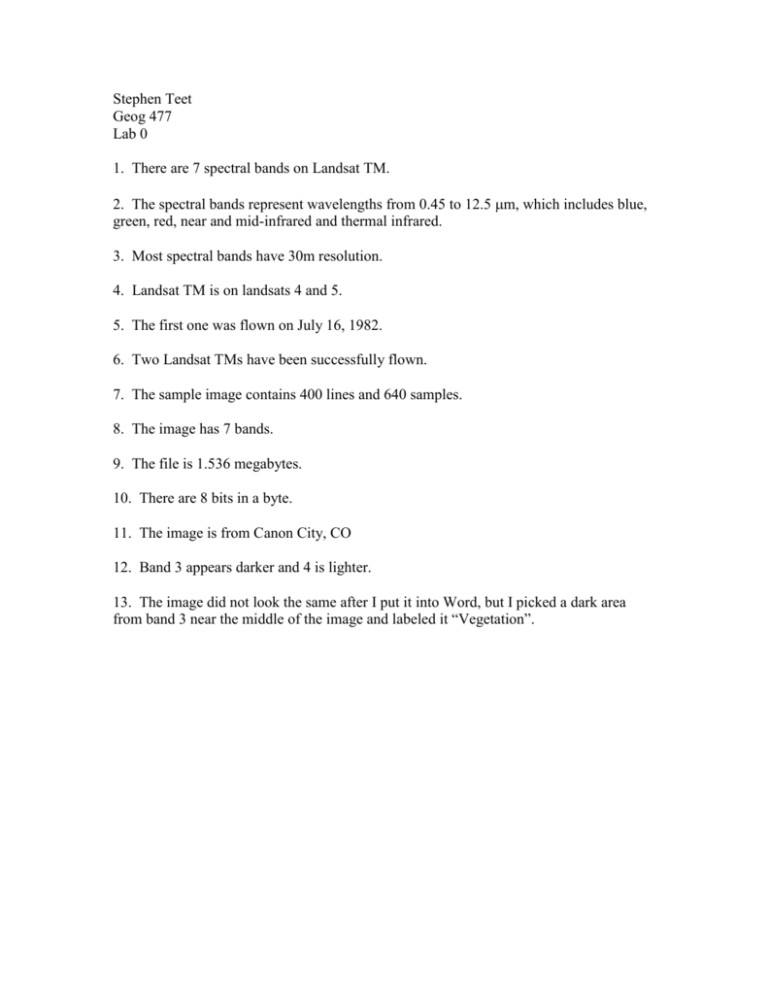
Stephen Teet Geog 477 Lab 0 1. There are 7 spectral bands on Landsat TM. 2. The spectral bands represent wavelengths from 0.45 to 12.5 m, which includes blue, green, red, near and mid-infrared and thermal infrared. 3. Most spectral bands have 30m resolution. 4. Landsat TM is on landsats 4 and 5. 5. The first one was flown on July 16, 1982. 6. Two Landsat TMs have been successfully flown. 7. The sample image contains 400 lines and 640 samples. 8. The image has 7 bands. 9. The file is 1.536 megabytes. 10. There are 8 bits in a byte. 11. The image is from Canon City, CO 12. Band 3 appears darker and 4 is lighter. 13. The image did not look the same after I put it into Word, but I picked a dark area from band 3 near the middle of the image and labeled it “Vegetation”. 14. The image has the highest average brightness at a wavelength of 0.83m. 15. This wavelength corresponds with band 4. 16. For bands 1-4, the max value is shifting right, then shifts back to the left from 4-6. Bands 1 and 4 have the highest peaks followed by 2. Band 3 has the lowest values. The range of the histograms, like the max values, peaks at band 4 and decreases towards the end bands. 17. The brighter pixels have higher numbers and the darker pixels have lower numbers. 18. The RGP values have a positive relationship with the data values. 19. The RGB values represent the color value of the pixel, not the data value. 20. The RGB values in this image are always the same because it is in a grayscale. 21. The values are different to represent a color image. 22. The upper leftmost coordinates are 1, 1 and the lower right most coordinates are 640, 400.




